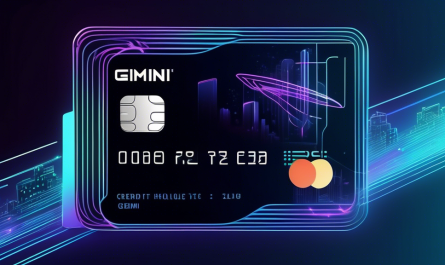Understanding the Basics of a Crypto Wallet
What is a Crypto Wallet? – Unpacking the Essentials
A crypto wallet is a digital tool that allows users to store, manage, and conduct transactions using cryptocurrencies. Unlike traditional wallets, a crypto wallet doesn’t store physical currency or tangible assets; instead, it holds cryptographic keys – both public and private – which are essential for accessing blockchain networks and performing various transactions.
The significance of a crypto wallet in the cryptocurrency ecosystem cannot be overstated. Not only does it offer a secure method to store cryptocurrencies, but it also facilitates seamless and safe transfers, boosting the overall efficiency of digital asset management. Whether you are a casual investor or a seasoned trader, understanding how to effectively use a crypto wallet is crucial for safeguarding your digital assets.
Crypto wallets come in various forms, broadly categorized into ‘hot wallets’ and ‘cold wallets.’ Hot wallets are connected to the internet, making them more convenient for frequent transactions but relatively less secure. On the other hand, cold wallets are offline devices, offering enhanced security at the expense of accessibility. This distinction is key to selecting the right type of wallet for your specific needs and security preferences.
What is a Crypto Wallet? – Unpacking the Essentials
Explanation of a Crypto Wallet
A crypto wallet is a digital tool that enables users to store, manage, and transact various cryptocurrencies like Bitcoin, Ethereum, and others. Essentially, it acts as a user-friendly interface for interacting with a blockchain. Crypto wallets come in various forms, each designed to meet different user needs ranging from simple transactions to secure long-term storage. Unlike traditional wallets that store physical currency, a crypto wallet stores the public and private keys necessary to engage in transactions on decentralized networks.
Importance and Purpose of a Crypto Wallet in the Crypto Ecosystem
The primary purpose of a crypto wallet is to provide security and ease of access to your digital assets. In the cryptocurrency ecosystem, wallets play a crucial role by serving as the bridge between you and the blockchain. They allow you to send and receive digital currency, monitor your balance, and, most importantly, keep your private keys secure. Owning a crypto wallet gives you full control over your funds, which is a foundational principle in the decentralized and peer-to-peer-oriented nature of cryptocurrencies.
Different Types of Crypto Wallets (Hot vs. Cold Wallets)
Crypto wallets can be broadly categorized into two main types: hot wallets and cold wallets, each offering varying levels of convenience and security.
Hot Wallets
Hot wallets are connected to the internet, making them highly accessible and user-friendly for everyday transactions. They are ideal for users who frequently buy, sell, or use cryptocurrencies. Examples of hot wallets include:
- Desktop Wallets: Software applications installed on a personal computer, offering a good balance between security and convenience.
- Mobile Wallets: Apps that run on smartphones, making cryptocurrency management on-the-go easy and accessible.
- Web Wallets: Online services that can be accessed through a web browser. They provide high accessibility but are often criticized for lower security due to their exposure to online threats.
Cold Wallets
On the other hand, cold wallets are not connected to the internet, offering enhanced security against hacking and other cyber threats. They are best suited for long-term storage of significant amounts of cryptocurrency. Common types of cold wallets include:
- Hardware Wallets: Physical devices that securely store private keys offline. They are considered one of the most secure options available.
- Paper Wallets: Physical printouts of your private and public keys. While incredibly secure from online attacks, they can be vulnerable to physical damage or loss.
- Cold Storage: An offline approach to storing cryptocurrencies, usually involving secure locations like vaults or safe deposit boxes.
Understanding these two primary types of crypto wallets and their respective advantages and disadvantages can help users make informed decisions about how to best secure and manage their digital assets.
How Do Crypto Wallets Work? – A Closer Look at Functionality
The Technology Behind Crypto Wallets (Private & Public Keys)
At the heart of every crypto wallet lies sophisticated cryptographic technology. The fundamental components that drive the operation of these wallets are private and public keys. These keys are essentially long strings of alphanumeric characters that are cryptographically linked.
The public key serves as an address to receive funds – think of it as your email address. When you want someone to send you Bitcoin or any other cryptocurrency, you share your public key. On the other hand, the private key is akin to your email account’s password. It is a crucial piece of information that grants access to your crypto assets and enables you to sign transactions, proving ownership.
The conjunction of these keys ensures the security and transferability of your digital assets. The private key must always be kept secret. If someone gains access to it, they can control your crypto assets. On the other hand, the public key can be freely shared to receive funds.
Step-by-Step Guide on Conducting Transactions
Knowing how to conduct transactions is critical for crypto wallet users. Here’s a step-by-step guide to making a transaction using your crypto wallet:
- Open Your Crypto Wallet: Launch your wallet application or software.
- Select Send/Receive: Depending on whether you are sending or receiving cryptocurrency, select the appropriate option.
- Enter the Recipient’s Address: For sending, you will need to enter the recipient’s public key address. Double-check the address to avoid errors.
- Specify the Amount: Input the amount of cryptocurrency you wish to send. Ensure that you have sufficient funds to cover the amount and any associated transaction fees.
- Review the Transaction Details: Carefully review the transaction details, including the recipient’s address and amount, before proceeding.
- Authorize the Transaction: Sign the transaction with your private key. Some wallets require additional authentication, such as a PIN or biometric verification.
- Transaction Confirmation: After authorization, the transaction is broadcasted to the network and awaits confirmation. Confirmation times may vary depending on the blockchain network.
- Transaction Completed: Once confirmed, the transaction is completed and will be reflected in both your and the recipient’s wallet balances.
Security Features and Best Practices for Safeguarding Assets
Security is paramount in the crypto world. Crypto wallets come with various security features designed to protect your assets. Some of these features include:
- Two-Factor Authentication (2FA): Requiring an additional verification step during login or transaction authorization significantly enhances security.
- Multi-Signature (Multi-Sig) Wallets: These wallets require multiple private keys to authorize a transaction, adding an extra layer of security.
- Backup and Recovery Options: Regularly backing up your wallet and securely storing recovery phrases ensures that you can recover your assets in case of device loss or failure.
- Encryption and Secure Storage: Private keys are often encrypted and stored securely within the wallet to prevent unauthorized access.
Alongside inherent security features, users must adopt best practices to safeguard their assets:
- Keep Private Keys Private: Never share your private keys with anyone. Store them in a secure location, preferably offline.
- Use Strong Passwords: Secure your wallet with strong, unique passwords and update them periodically.
- Stay Vigilant Against Phishing Attacks: Be cautious of any unsolicited messages or emails requesting your wallet information.
- Regularly Update Wallet Software: Keeping your wallet software updated ensures that you benefit from the latest security patches and features.
By understanding the technology behind crypto wallets and adopting stringent security practices, you can confidently navigate the crypto landscape and protect your digital assets effectively.
Choosing the Right Crypto Wallet – Key Factors to Consider
When venturing into the world of cryptocurrencies, one of the most crucial decisions you’ll have to make is selecting the right crypto wallet. Whether you are a novice investor or a seasoned trader, finding a suitable wallet is paramount for security and convenience. This segment will guide you through comparing various wallet options, understanding essential factors like usability and security, and reviewing popular crypto wallets available in the market.
Comparison Between Various Wallet Options
Crypto wallets come in several forms, primarily categorized into hardware, software, and paper wallets. Each type has its unique features, advantages, and drawbacks, catering to different needs and preferences.
Hardware Wallets
Hardware wallets are physical devices specifically designed to securely store cryptocurrency. They are offline wallets that provide a high level of security against hacks and malware. Examples include Ledger Nano S and Trezor.
- Security: Hardware wallets store private keys offline, making them immune to online threats.
- Usability: While generally user-friendly, there may be a learning curve for beginners.
- Cost: These wallets can be expensive, but the investment is worth it for enhanced security.
Software Wallets
Software wallets are applications or programs downloaded onto a device like a computer or smartphone. They come in the form of desktop, mobile, and web wallets. Examples include Exodus (desktop), Trust Wallet (mobile), and MetaMask (web).
- Security: More vulnerable to hacks and malware compared to hardware wallets since they are connected to the internet.
- Usability: Often offer convenient and wide-ranging functionalities, especially for regular transactions.
- Cost: Many software wallets are free to use, making them accessible for beginners.
Paper Wallets
Paper wallets are physical pieces of paper containing your private and public keys. These keys are printed or written down and stored offline, making them a form of cold storage.
- Security: Very secure as they are entirely offline; however, physical damage or loss is a risk.
- Usability: Not very practical for frequent transactions or beginners due to the manual process involved.
- Cost: Paper wallets are virtually free, aside from the printing materials.
Factors to Consider: Usability, Security, Cost, and Recovery Options
Choosing the right crypto wallet involves balancing several critical factors:
Usability
Your level of experience with cryptocurrencies will play a significant role in selecting a wallet. For beginners, a wallet with a user-friendly interface, straightforward transaction processes, and accessible customer support may be ideal.
Security
Security is paramount in the crypto world. Hardware wallets offer the highest security level due to their offline nature, while software and paper wallets vary in their vulnerability to attacks. Look for wallets that offer advanced security features like multi-factor authentication, PIN codes, and biometric verification.
Cost
Cost can vary significantly among wallet types. Hardware wallets usually require a financial investment but are worth it for the added security. Software wallets can be free or come at a small price, whereas paper wallets are essentially free but come with their practical difficulties.
Recovery Options
Losing access to your wallet can be catastrophic. Always choose a wallet with robust recovery options, such as backup phrases or keys, to ensure you can retrieve your assets if something goes wrong.
Popular Crypto Wallets on the Market and User Reviews
Here are some of the most popular crypto wallets currently available, along with user reviews:
Ledger Nano S
Features: Advanced security, supports multiple cryptocurrencies, portable.
User Review: Great hardware wallet with excellent security features. Worth every penny for peace of mind. – Jane Doe
Trezor
Features: User-friendly interface, strong security, supports multiple currencies.
User Review: Easy to use and highly secure. Ideal for both beginners and experienced users. – John Smith
Exodus
Features: Desktop wallet, integrated with ShapeShift for easy trading, visually appealing interface.
User Review: Fantastic desktop wallet with a sleek design and solid security measures. – Alice Lee
MetaMask
Features: Browser extension for Ethereum and ERC-20 tokens, user-friendly, secure login.
User Review: Convenient and easy-to-use wallet for Ethereum transactions. Highly recommend. – Bob Johnson
These reviews and features should help you gauge which crypto wallet best suits your needs. Remember, the right wallet for you hinges on balancing security, usability, cost, and recovery options based on your specific requirements.
Conclusion
In conclusion, understanding the basics of a crypto wallet is paramount for anyone venturing into the world of digital currencies. A crypto wallet plays an essential role in the management, security, and facilitation of cryptocurrency transactions. By grasping the fundamental concepts, including the distinctions between hot and cold wallets, as well as the underlying technology that powers them, users can make informed decisions tailored to their specific needs.
Functionality and security are at the heart of how crypto wallets operate, leveraging cryptographic keys to ensure safe and authentic transactions. It’s crucial for users to adhere to best practices to protect their assets, such as using strong passwords, enabling two-factor authentication, and regularly updating their wallets.
Choosing the right crypto wallet requires a careful assessment of various factors, including usability, security, cost, and recovery options. With an array of hardware, software, and paper wallets available, each offering unique advantages, users can select the wallet that best aligns with their preferences and requirements. Popular options such as Ledger, Trezor, and MetaMask have garnered positive reviews and continue to be favored by many in the crypto community.
Ultimately, a well-informed approach to selecting and using a crypto wallet paves the way for secure and efficient management of digital assets. As the cryptocurrency landscape continues to evolve, staying educated and vigilant remains key to safeguarding one’s investments and achieving success in the crypto ecosystem.



